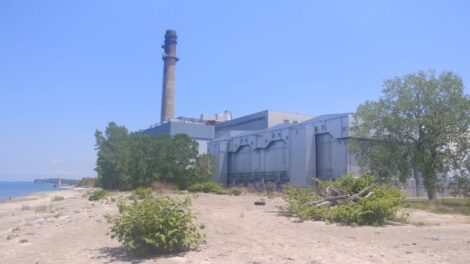Proposed State Aid Change Would Hit County Schools
State aid to schools was fully funded for the first time in the history of the Foundation Aid formula in 2023-24.
Now that formula is looking at a potential overhaul initiated by Gov. Kathy Hochul.
Part of the state’s 2024-25 budget agreement Hochul and state lawmakers approved a study by the Rockefeller Institute of Government to assess the formula and share recommendations for modernizing and improving the Foundation Aid formula. That study is now complete – and its recommendations could change the economic landscape for schools in Chautauqua County and across the state.
The 314-page study’s recommendations are non-binding, but give state lawmakers and state Education Department officials suggestions to make state aid more fair. The recommendations, according to Rockefeller Institute officials, could be in place in time for the 2025-26 state budget that will be released by Gov. Kathy Hochul in January.
The Post-Journal and OBSERVER will delve into the study’s recommendations in a series of stories over the coming weeks. Today’s focuses on hold harmless aid, a provision that guarantees that no school district will receive less total Foundation Aid than it received in the previous year.
POINT OF CONTENTION THIS YEAR
Hold harmless aid became a sticking point for many state lawmakers and school districts when state legislators were discussing the 2024-25 state budget earlier this year. In addition to hold harmless aid, school districts are guaranteed that they will receive a minimum annual increase of $500 per pupil in Foundation Aid, and may choose this level of funding if all options under Foundation Aid formula will produce a lesser amount.
Hochul cut hold harmless funding by $167.9 million across 337 districts with cuts prorated based on district wealth but happening primarily within rural districts, especially those that have had the greatest enrollment declines. The proposal does not include a minimum increase for all districts.
That budget proposal included state aid decreases for four local schools – Chautauqua Lake, Ripley, Pine Valley and Clymer. State Sen. George Borrello, R-Sunset Bay, said half of the districts in his Senate district were proposed to lose state aid under Hochul’s budget proposal.
“I represent a lot of rural school districts and obviously there has been an enrollment decline,” Borrello said during an education budget hearing earlier this year. “Earlier I think you commented on the hold harmless and your concerns about that. If you could expound on that? What I’m hearing from my rural school districts is that their fixed costs aren’t going down with less money – in fact they’re going up.”
The hold harmless changes weren’t included in the state budget when it was approved last spring.
DISINCENTIVE TO REGIONALIZE
Rockefeller Institute officials found that many of the districts that receive hold harmless state aid are also educating fewer students than they did 10 years ago while also adding money to their reserve funds. Nearly one-fifth of all hold harmless funding goes to low-needs districts.
Approximately $136 million in Save Harmless payments go to districts that have unrestricted year-end fund balances greater than the 4 percent allowed while $59 million of that total was paid to districts that have year-end fund balances greater than 10%. Another 73 districts that currently receive a total of $89 million in Save Harmless aid have year end reserve funds greater than 4% and a 10-year drop in enrollment of 15% or
greater. About half of that Save Harmless aid, $43 million, was paid to districts with reserve funds greater than 10% and a 10-year drop in enrollment of 15% or more.
“Because basic costs to successfully educate students have increased over the years, and because the scope of what schools have been asked to do for students has changed and increased, enrollment levels alone cannot be the sole determinant of funding levels,” the study states. “On the other hand, it also is reasonable to expect that Foundation Aid would be adjusted for districts that experience substantial decreases in student populations, whether measured in total number or percentage. Save Harmless payments prevent these adjustments from being made. For neighboring school districts that are each experiencing significant decreases in student enrollment, Save Harmless payments also may be acting as a disincentive to merge or regionalize, denying students the enhancements in educational experiences that could result from such consolidations.”
The study recommends phasing in wealth-based reductions to save harmless and redistributing the aid through a more equitable, reformed Foundation Aid formula. State officials are recommended to establish a per-pupil local income and property wealth threshold above which districts could not receive full hold harmless aid payments as well as an enrollment-loss threshold that would begin reductions in hold harmless allocations for school districts. Money saved would be reinvested in lower-wealth districts experiencing enrollment growth.
School districts that retain more than 10% of their budget as a year-end fund balance are recommended to apply the excess local money to offset any hold harmless allocations, while districts with a 10-year reduction in student enrollment of 15% or more and year-end surpluses of more than 4% to apply the extra money as an offset against hold harmless payments.
Realizing the controversy over hold harmless changes during last year’s state budget talks, Rockefeller Institute officials said a three- or five-year phase-out schedule of any planned allocations in hold harmless payments to school districts could be considered.
“Some scholars maintain that Save Harmless distorts the equalizing effect of Foundation Aid,” the report states. “Under this view, Save Harmless means that “districts with declining enrollments tend to have systematically higher per-pupil expenditures over time.”359 “Scarce dollars get sent to some districts at the expense of others. In many cases those benefiting are wealthier, whiter districts and not the districts with the highest needs. Today, when state revenues are collapsing, an extra state dollar sent to a district via a hold-harmless clause means a deeper cut to another district–likely in the very districts that arguably need the most state aid.”




